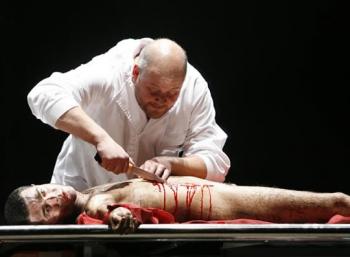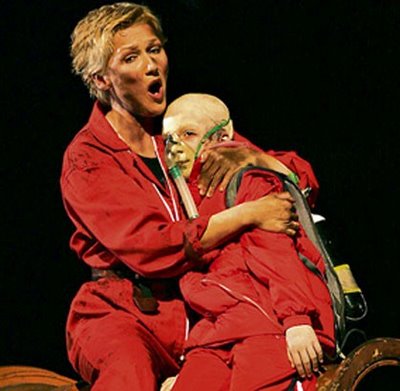2007-08 opera by the Bay
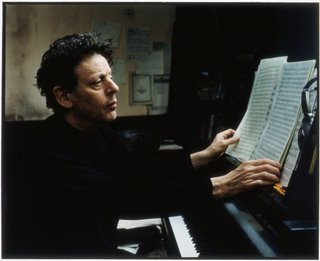 Philip Glass, by Annie Leibovitz
Philip Glass, by Annie LeibovitzI attended the San Francisco Opera's press conference this morning, mostly because I wanted to hear Philip Glass talk. He didn't disappoint, as he made a convincing case for his new opera Appomattox, which the company will premiere in October.
Glass spoke inspiringly about Ulysses S. Grant and Robert E. Lee, mentioning how no leaders currently in the world stage rise up to the level of these civil war generals. Lee and Grant met face to face, and ended the most devastating of all American wars with remarkably little residual bitterness, giving it a finality that allowed the nation to move on with dignity. Set on a libretto by Christopher Hampton, the Appomattox premiere continues in a way Glass' epic depictions of larger than life historical entities: Einstein, Akhnaten, Ghandi, etc. Andrew Shore and Dwayne Croft will create the roles of the two generals, respectively, conducted by Dennis Russell Davies.
The SF Opera 2007-08 season looks pretty promising on paper, except that it will open with the company's old production of Saint-Saëns' SAMSON AND DELILAH. During the conference, David Gockley said it is one of the "most beautiful" productions that SF Opera owns, but let's be real: they are restaging this turkey as an excuse to present Olga Borodina in something that won't take too much rehearsal time to put together.
 Yawn....
Yawn....It will be fun to see a new TANNHÄUSER at SFO, solidly cast with Peter Seiffert in the title role, Petra Maria Schitzer as Elisabeth and the return of Eric Halfvarson, the terrific Hagen of the SF Opera's 1999 Ring Cycle. I saw Graham Vick's Meistersinger in London a few years ago and it wasn't at all bad; we'll see how he does with this.
And it is about time we got a new MAGIC FLUTE in San Francisco; the existing production was among the weakest of David Hockney's creations. Don't know how original this (new to San Francisco) Maurice Sendak production will be, but at least it will be something different to look at. I would have been happy even with the Gerald Scarfe production from the LA Opera, but what will help for sure is a fresh and promising new cast, with Christopher Maltman's company debut as Papageno; Rebecca Evans (whom Runnicles called "delicious" at the conference) as Pamina; Piotr Beczala as Tamino; Georg Zeppenfeld as Sarastro; and Erika Miklósa as the Queen.
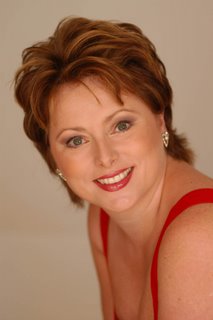 Rebecca Evans: delicious!
Rebecca Evans: delicious!A new production of Puccini's LA RONDINE showcases the company debut of Angela Gheorghiu, assuming of course, that Madame Gheorgiu will actually show up. Anna Christy, the unspectacular Cunegonde of Robert Carsen's recent Candide at the Theatre du Chatelet, is the cast as Lisette in this Nicolas Joël production.
According to Gockley, the production of Verdi's MACBETH is a remnant of Pamela Rosenberg's planning that he was happy to keep. I'm sure the fact that Thomas Hampson was in the cast had something to do with it; but Runnicles promised that Doina Dimitriu (as Lady Macbeth) will be a voice to remember.
A new production of THE RAKE’S PROGRESS by Igor Stravinsky will bring back Laura Aikin (the one-winged blue angel from St. François d'Assise) and James Morris; but the Gockley's casting splurge on this production is Denyce Graves' Baba the Turk. William Burden sings Tom Rakewell.
For sheer entertainment value, the summer 2008 season takes the cake. Wagner's DAS RHEINGOLD launches what will eventually be Francesca Zambello's new Ring Cycle (slated in SF for the summer of 2011). A co-production with the Washington Opera, Zambello's Ring will be inspired by American iconography. Mark Delavan's Wotan is an interesting casting choice, one that many will be eager to hear, along with the unlikely casting of Jennifer Larmore as Fricka. Runnicles conducts.
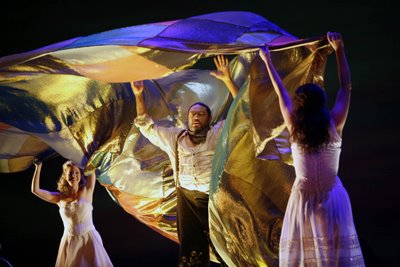
Zambello's Rhine: Ain't we got fun
The second summer selection comes in the form of the Dallas Opera production of Handel's ARIODANTE, with Patrick Summers leading a truly stellar cast, headed by Susan Graham, Ruth Ann Swenson, Ewa Podles, Eric Owens and Richard Croft. The John Copley production will no doubt be dressed in period splendor, but it will be more interesting to assess Patrick Summers' credentials on Handelian rep.
Vocally, it is hard to erase the memory of Ruth Ann Swenson's fabulous LUCIA DI LAMMERMOOR of a few years back. But if anyone can do it, it would be the amazing French coloratura Natalie Dessay, making her company debut as the uxoricidal heroine.
In any case, if you want more details you can find a copy of the SF Opera's official press release here.
© 2007 C. Chang
Want to be notified of new Bay Buzz articles? Send an e-mail message with the subject "PLEASE NOTIFY ME" to this address. (Names and addresses kept strictly confidential.)
Back to home.
